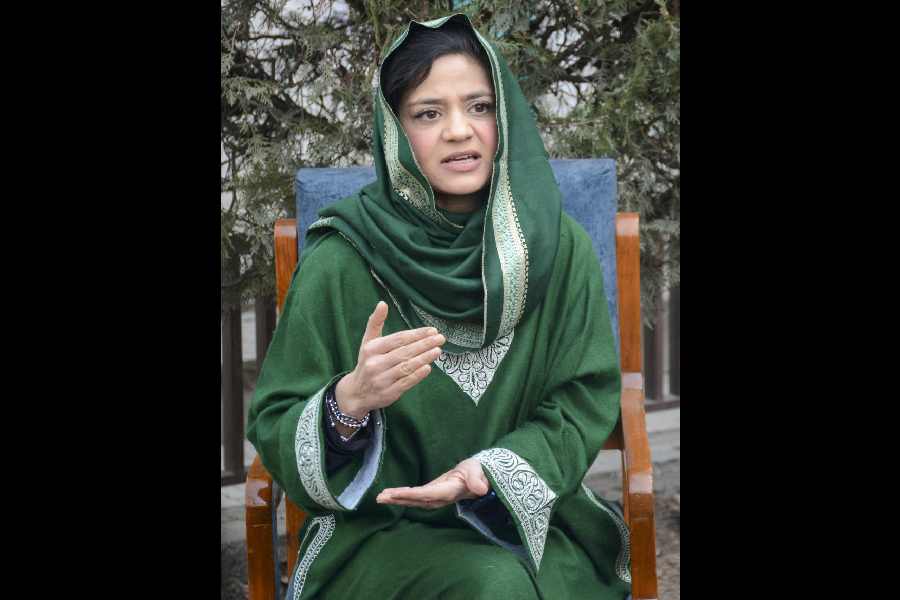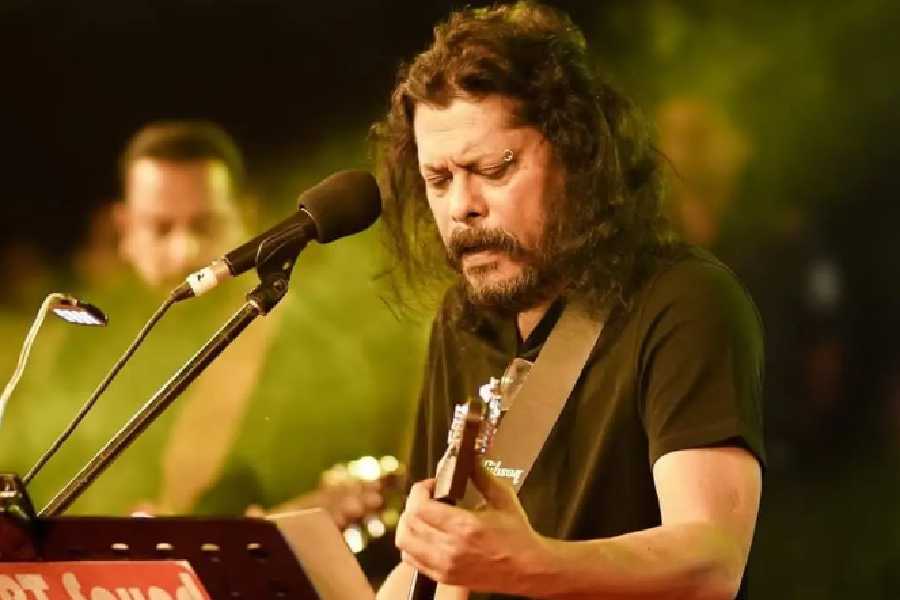 |
| Mignon Johnson shot to fame after winning a TV cooking show and is now opening a new restaurant in Somerset Pix courtesy: Somerset County Council and Corbin O’ Grady |
When Madhur Jaffrey began writing out the recipes that came to her in little air letters from her mother, little did she know that she was starting off a genre. Ever since she introduced the West to the real thing, walking culinary newbies step by step through the intricacies of rustling up authentic Eastern meals, however a new curry phenomenon has come about.
A select set of gourmet ‘desi curry divas’ is simplifying Indian cuisine even further than the original curry queen who, you might say, has passed on the baton to these Britain-based ladies. Faces like Anjum Anand, Manju Malhi, Tasnim Hussain and Mignon Johnson are catering to what they call a quick-fix generation that believes in quick bites.
Take note. They are not just cooking up another ‘brown curry’. Spices are their palette and time-saving techniques their forte. So when you set out to try out a dish that they pen down the recipe for or cook live on TV, you realise it can actually be zapped in almost 15 minutes flat.
“These days the more complicated the dish, the less it is cooked. And we need reasons to cook more, not less,” says Anjum Anand. “I cook for people of my generation. So I consciously cut down on the cooking stages.” The Hampstead-based 30-something-year-old indeed makes baking hot naans and whipping up shrikand look effortless.
Anand is the hot new host of a cookery show called Indian Food Made Easy on Discovery Travel & Living channel. In each episode, she introduces family, friends and fellow Brits to the minutiae of Indian cuisine.
At another end of the purist spectrum is Tasnim Hussain. The author of Curries Made Simple, a cookery book, is based in Glasgow which has a sizeable number of Indian restaurants. She freezes tubs of coriander, spring onions and keeps jars of chillies and boxes of fried onions ready so that she can put a curry on the table after getting home from her full-time job as a mathematics schoolteacher. “No toiling for hours in the kitchen,” she says.
 |
| Manju Malhi is a regular on NDTV Good Times with her show Cooking Isn’t Rocket Science and in Britain she’s more famous for her no-nonsense attitude to Indian food |
And it’s the quick tips that she doles out in her cookbook which her husband Khalid, daughter Sophina and son Yousuf helped put together in 2005 and that curried better response than she expected. Orders poured in from the US, Australia, Germany and Spain. Now Hussain has an offer to appear on Anand’s food show on BBC.
Hussain’s little book of tricks has even helped her serve up large-scale gatherings — she recently served up an Indian meal to 300 women prisoners at one go in a Scottish prison. “Vegetable pakoris, pulao, tandoori chicken, naan and chana saag were some of the items on the menu. It was a hit,” says the second generation Punjabi immigrant.
An impish smile spreads across Manju Malhi’s face as she lets out some tricks from her culinary bag. The bespectacled lady is a regular on NDTV Good Times with her show, Cooking Isn’t Rocket Science, in which she tutors her Indian audience in the art of making British food. Ironically, she is known in the UK for doing the reverse and as a crossover gourmet chef has appeared on several TV shows in Britain.
“I cut back on the number of spices in a single dish. I go by the basic five-spice rule. It’s to encourage every non-Indian and Indian to store cumin, coriander, garam masala, turmeric and chilli powder in his or her cupboard,” notes Malhi.
The entrepreneur among these divas, meanwhile, is Mignon Johnson who runs her own cookery workshops and who is famous for the home-cooked meals she disperses from the interiors of The Saffron Kitchen, a business outfit making Indian food for companies and catering to private events and weddings in and around Taunton in Somerset where she lives.
Johnson’s mother was an Anglo-Indian from Hyderabad, her father a Goan and she grew up in Pune. Today Johnson lives with her English husband in a small hamlet called Rooks Nest, about 12 miles outside Taunton. Her specialities are putting together Parsi dishes such as dhansak and brown rice with cucumber.
“I like introducing people to delicious unusual Indian vegetables like drumsticks, commonly cooked with sambhar. I delight in coming out of the kitchen, to demonstrate to my guests on how drumsticks should be eaten, fingers and all,” she says.
 |
 |
| Tasnim Hussain is a Glasgow schoolteacher who put together a cookbook Curries Made Simple with the help of her family |
Her Angelina Jolie lips, glossy swathe of hair and a fine accent draw attention to the oft made comparisons made between Anjum Anand and Nigella Lawson. It extends to Anand’s sensuous descriptions of food much like her English counterpart — in one show she introduces firefighters to a ‘satiny’ dish of aubergines with yoghurt made the Bengali style or makes her friend ‘grope’ and ‘smell’ a mango before sucking on the skin.
How authentic are her recipes you might ask? Anand is quick to leap to the defence of her London upbringing. “Food travels well and doesn’t necessarily lose anything on the journey from its home. The food that I as a second generation Indian grew up with at home, was indistinguishable from food cooked in the homes of my relatives in India,” she insists. Anand has also travelled extensively in India, spending time in her family homes in Calcutta and Delhi, and picked up on regional cuisines.
Of course, she spices up her recipes and gives them ‘a modern twist or slant’. For instance, to get kitchenphobes started, she shows how to make lamb burgers — simply spiced lamb kebabs in buns.
Johnson’s recipes are influenced by her mother’s handwritten recipes. She falls back on a lineage of ‘terrific cooks’ and childhood memories of travelling by steam train during Christmas to visit ‘Mama’, her paternal grandmother where she gorged on pork vindaloo and sorpotel. “Her larder was always crammed with the most delicious pickles and chutneys and prawn balchao,” she adds wistfully.
Even while the New World stress is on quick dishes, healthy eating happens to be the watchword of the generation and to keep up with that they emphasise on fresh local produce.
“There is currently an active movement towards local food in the UK. We participate in farmers markets, local and regional food festivals and events,” says Johnson who is strict about not using ghee in her recipes and keeping her curries gluten-free.
Meanwhile Malhi oven-bakes samosas and churns barfis out of skimmed milk. She works hand-in-hand with a charity organisation called Diabetes UK. So she drops ghee, sugar, cream, butter and the like from her list whenever she can. Only olive oil and sunflower oil work for her.
Having been chubby in her 20s, Anand took her daily diet into her own hands by learning to cook using minimal fat and mild spices while using the freshest of ingredients for flavour.
In one episode on her Travel & Living show, she adds a few Indian dishes at a spa to remove the notion that Indian food is heavy and makes you feel sluggish. She puts naans, the south Indian Avial, the Bengali dish of sweet chholar daal and crisply fried okras on the menu, while finishing it off with shrikand as dessert.
 |
| Anjum Anand has become a TV star who has even been called the Nigella Lawson of Indian cooking |
Unlike the Gordon Ramsays and the Anthony Bourdains of the gourmet world, most of these curry ladies didn’t work their way up in the kitchen. Hussain might have grown up in Edinburgh watching her mother frying pakoras, but it was only when she got married that she learnt to cook traditional food by getting on the phone to her mother.
At home, she picked up a pen and paper when her school colleagues egged her on to write recipes that could be sold for charity. Soon afterwards that morphed into her self- published cookbook that sparked off her culinary career.
Johnson’s story started when she went to live in England and found the mass produced kormas, jal-frezis, vindaloos and Madras curries in the Bangladeshi restaurants dreadfully unappetising. She began her business from her own kitchen.
“Growing up in India, I was used to freshly cooked bhajis and warm rotis served straight from the pan to plate by none other than the trusted khansama. The business idea originated from a desire to share this culinary experience,” she points out.
She further caught the public eye when her pork vindaloo dish won a UKTV Food competition and she appeared on television with celebrity chefs Antony Worrall-Thompson and Paul Rankin.
Her newest project is the Moorkhana Restaurant in Wiveliscombe, Somerset.
Meanwhile Malhi too shot to fame after winning a competition on BBC’s Food and Drink programme. The prizewinner was a simple green coriander chutney that she whipped up with a blender in her Middlesex kitchen garden. “I dragged my poor friend right in the middle of a windy January day to shoot me outdoors,” she chuckles.
Malhi, who is a voiceover artist for BBC, subsequently went on to appear on numerous TV shows and win an award for her first book Brit Spice, the paperback version of it having come out in June 2003. It was followed up with India with Passion in 2004. Her latest tome called Easy Indian even comes with a music CD.
The only one who has some semblance of professional experience in restaurant kitchens is Anand. Having studied in Geneva, Paris and Madrid and acquired a business degree, she went on to work in places like Café Spice in New York, Mondrian Hotel in Los Angeles, and the Park Royal Hotel’s Indian restaurant in Delhi.
She is a cookery writer too with books such as Indian Every Day: Light, Healthy Indian Food and Indian Food Made Easy to her credit. She has also been a regular on the BBC and UKTV food channels.
There happen to be myths associated with Indian food that they take pleasure in debunking. According to Malhi, it is the notion that Indian cuisine has an overdose of spices. On the other hand, points out Hussain, chicken tikka masala is not really a traditional dish. “It is basically chicken in masala,” she adds.
Johnson dispels the concepts that swirl around the vindaloo — the myth that it is a “hot mannish challenge dish”, after a night in the pub on Friday. She says, “In fact, the origins of this dish lies way back in the days of Portuguese Goa and before refrigerators came into existence. The meat was marinated in vinegar (vin is Portuguese for wine or vinegar) and garlic (alho is Portuguese for garlic), in order to preserve the shelf-life of expensive meat. The marinated meat was later cooked when needed and the succulent dish was cooked with a mixture of spices.”
All myths driven out of the way? Perfect.
So while cooking an Indian does seem to be on its way to becoming as common as scrounging up a stir-fry, each one of these ladies is saying Amen to the pleasures of the table.










